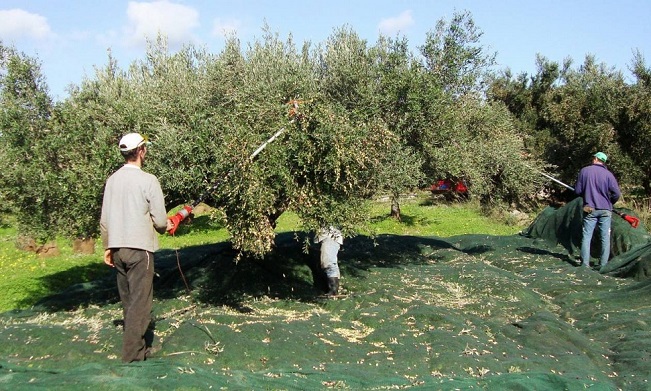The olive tree, with its gnarled trunk and silvery leaves, is a symbol of the Mediterranean and a fundamental part of Cretan culture and agriculture. For thousands of years, olive cultivation has been integral to life on the island, providing not just food but also a way of life for many of its inhabitants. Participating in olive harvesting experiences offers visitors a unique opportunity to connect with this ancient tradition, immerse themselves in rural Cretan life, and gain a deeper appreciation for the production of one of the world’s most revered oils.
The Significance of Olive Harvesting in Crete
Olive harvesting in Crete typically takes place between October and January, a time when the island’s countryside comes alive with activity. This period is crucial for local farmers who rely on the annual olive yield for their livelihoods. The process of harvesting olives is labor-intensive and requires a combination of skill, patience, and hard work. By participating in this experience, visitors can directly contribute to the local community while learning about the intricate process that goes into producing high-quality olive oil.
The Olive Harvesting Process
The traditional method of olive harvesting has remained largely unchanged for centuries. It begins with the careful selection of the right time to harvest, ensuring that the olives have reached the perfect level of ripeness. The harvest typically starts early in the morning when the air is cool, making the physical labor a bit more manageable.
- Laying Down Nets: The first step involves spreading large nets under the olive trees to catch the falling fruit. These nets are crucial for collecting the olives efficiently and minimizing the loss of any fruit.
- Picking the Olives: There are several ways to harvest olives. Traditionally, olives were picked by hand or by gently beating the branches with long sticks to knock the olives off the tree. In modern times, mechanical shakers and rakes are often used to expedite the process. Hand-picking is still practiced, especially for premium olive oils, as it causes the least damage to the fruit and the tree.
- Collecting the Olives: Once the olives have fallen onto the nets, they are gathered into baskets or crates. The olives are then transported to the processing facility, where they are cleaned and sorted. Leaves and twigs are removed, and any damaged or unripe olives are discarded.
- Processing the Olives: The cleaned olives are then crushed, either using traditional stone mills or modern mechanical presses. The resulting paste is then pressed to extract the olive oil. This process must be done quickly to ensure the highest quality of oil, as prolonged exposure to air can cause the olives to oxidize and deteriorate.
Immersive Harvesting Experiences
Many farms and olive groves across Crete offer immersive olive harvesting experiences for visitors. These experiences often include hands-on participation in the harvesting process, guided tours of the olive groves, and demonstrations of traditional and modern olive oil production techniques. Visitors can learn about the different varieties of olives grown on the island, the factors that influence olive oil quality, and the history and cultural significance of olive cultivation in Crete.
In addition to the harvesting activities, these experiences often include tastings of freshly pressed olive oil. Participants can sample different oils and learn to discern the subtle flavors and aromas that characterize high-quality olive oil. These tastings are usually accompanied by traditional Cretan foods, such as fresh bread, cheeses, and cured meats, providing a delicious and authentic culinary experience.
Cultural and Educational Benefits
Participating in olive harvesting experiences offers numerous cultural and educational benefits. It provides a unique opportunity to engage with local farmers and learn about their way of life. Visitors gain firsthand insight into the hard work and dedication required to produce olive oil, fostering a greater appreciation for this staple of the Mediterranean diet.
Furthermore, these experiences help to preserve and promote traditional agricultural practices. By supporting local farms and participating in the harvest, visitors contribute to the sustainability of rural communities and the conservation of cultural heritage. This form of agritourism also promotes environmental awareness, as many olive farms in Crete adhere to organic and sustainable farming practices.
The Joy of Connection
Beyond the educational and cultural aspects, olive harvesting experiences offer the simple joy of connection. There is something profoundly satisfying about working with the earth, feeling the rough bark of the olive tree, and experiencing the camaraderie of a shared task. Harvesting olives is not just about gathering fruit; it is about participating in a timeless ritual that connects people to the land and to each other.
Conclusion
Participating in olive harvesting experiences in Crete is a unique and enriching way to engage with the island’s agricultural heritage. It offers a hands-on opportunity to learn about the process of olive oil production, from tree to table, while supporting local farmers and sustainable practices. Through these experiences, visitors can deepen their appreciation for Cretan culture, enjoy the island’s natural beauty, and take part in a tradition that has shaped the Mediterranean world for millennia. Whether you are an avid foodie, a history enthusiast, or simply someone looking for a meaningful travel experience, olive harvesting in Crete is an adventure that will leave a lasting impression.


